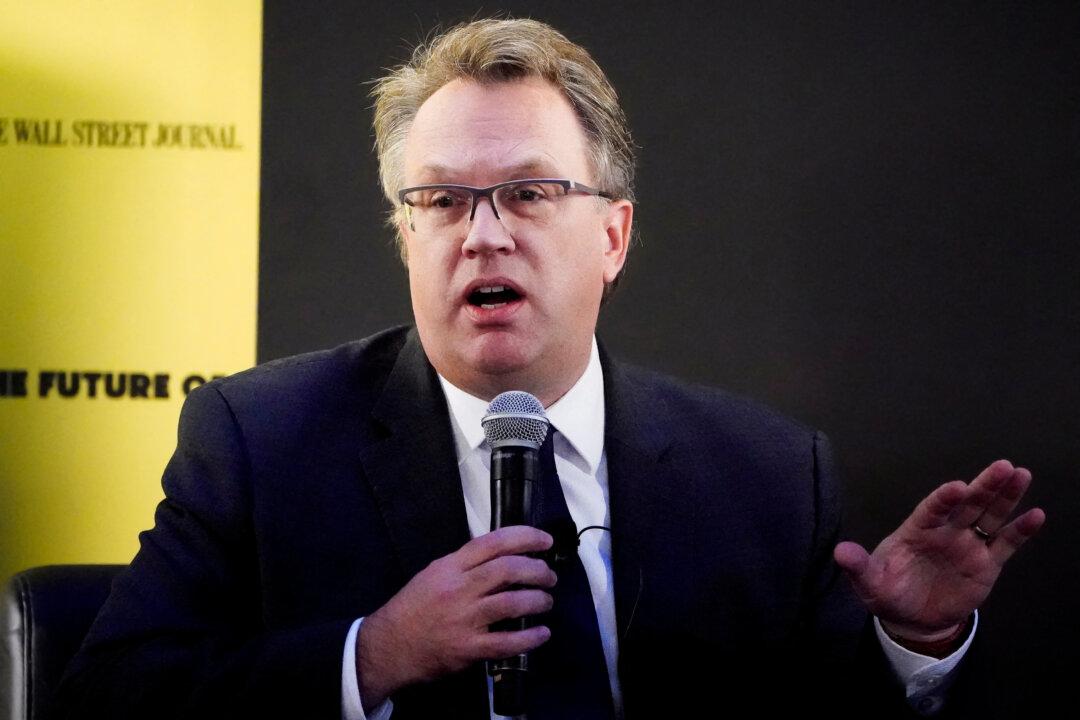The Federal Reserve will “eventually” cut interest rates as the central bank continues to inch toward achieving its inflation target of 2 percent, New York Fed President John Williams told a prominent event on Monday.
Appearing at the Milken Institute 202 Global Conference in Beverly Hills, California, Mr. Williams soothed financial markets and dismissed any concerns about a rate hike. Instead, he explained that monetary policy is in a “very good place” and sufficient to fend off inflation even as the data suggest a reacceleration.
The regional central bank chief refrained from offering a timeline for when his colleagues could agree to a lower benchmark interest rate.
“Eventually, we'll have rate cuts,” he said, adding that “policy is in a very good place, and we have the time to collect more, so steady as she goes.”
“But it’s really looking at all the data,” Mr. Williams explained.
Last week, the Fed left the benchmark federal funds rate at a range of 5.25 percent and 5.5 percent.
Investors were worried that the institution would signal a coming rate hike. However, Fed Chair Jerome Powell assuaged these fears by telling markets that it is “unlikely” policymakers will raise interest rates.
“I think it’s unlikely that the next policy rate move will be a hike. We don’t see evidence that policy isn’t restrictive,” Mr. Powell told reporters at the post-meeting press conference.
‘Deliberate’ Is Key to Fighting Inflation
The hotter-than-expected inflation reports in the first quarter of 2024 confirmed that the Federal Reserve being “deliberate” has been valuable, says Richmond Fed head Thomas Barkin.Speaking at the Columbia Rotary Club in South Carolina on Monday, Mr. Barkin conceded that he is confident the central bank will restore price stability. Still, remaining patient will be paramount to declaring the mission accomplished.
According to Mr. Barkin, the Fed will need more confidence that inflation is returning to 2 percent sustainably.
“With this data whiplash over the last few months, it is natural to wonder whether we are experiencing a real shift in the economic outlook or merely one of the bumps we said we expected along the way,” he said. “Should we take more signal from the past three months or the prior seven?”

The annual inflation rate rose to 3.5 percent in March, up from 3.2 percent in February.
The core consumer price index (CPI), which strips the volatile energy and food categories, was unchanged at 3.8 percent for the second straight month. The 3- and 6-month annualized core CPI readings climbed to 4.5 percent and 3.9 percent, respectively.
The Fed leadership is not in panic mode yet. Mr. Powell iterated that he believes inflation will “move back down” over the course of this year.
At the same time, Fed Gov. Michelle Bowman still sees various “upside inflation risks” that will impact her outlook. Although her baseline forecast is a further decline in inflation with the current policy stance, there are still aspects that could threaten the central bank’s inflation progress.
Ms. Bowman cited a paucity of additional supply-side improvements, geopolitical conflicts, increased immigration, housing affordability issues, and further loosening in financial conditions.
Staying the Course
For now, the central bank leadership is comprised of “doves looking to gently cut rates,” says Jay Woods, the chief global strategist at Freedom Capital Markets.Mr. Powell was “the ultimate tease” as he reiterated the typical “one data point at a time” while simultaneously shrugging off additional rate hikes and asserting that “further progress in bringing inflation down is not assured and the path forward is uncertain.”
“So for now, it’s business as usual as he circles over the situation like a bird waiting to pounce,” Mr. Woods said in a note. “The question remains, is this bird a peaceful dove looking to gently wait to cut rates, or could this ‘uncertain path’ turn into a hawk that needs to attack inflation through another rate hike? For now, based on Powell’s tone, this bird is a dove that hopes the data stops trending higher.”
In Fed speak, hawks are policymakers who desire tighter monetary policy to accomplish the organization’s dual mandate of price stability and maximum employment. Doves aim for looser monetary policy to facilitate economic growth.
In recent weeks, the monetary authorities have engaged in a balancing act between dovish and hawkish, purporting multiple things at the same time. The summary of their arguments is that there is “no urgency” to cut rates, policy can remain restrictive as long as the economy outperforms, and the benchmark rate will come down later this year.







